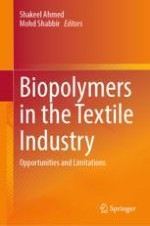2024 | OriginalPaper | Buchkapitel
Environmental Impact and Economic Benefits of Biopolymers in the Textile Industry
verfasst von : Heena Gupta
Erschienen in: Biopolymers in the Textile Industry
Verlag: Springer Nature Singapore
Aktivieren Sie unsere intelligente Suche, um passende Fachinhalte oder Patente zu finden.
Wählen Sie Textabschnitte aus um mit Künstlicher Intelligenz passenden Patente zu finden. powered by
Markieren Sie Textabschnitte, um KI-gestützt weitere passende Inhalte zu finden. powered by
